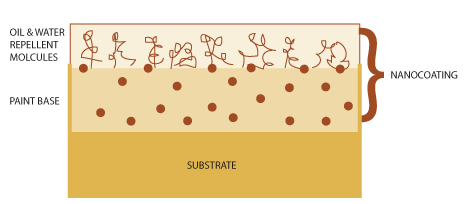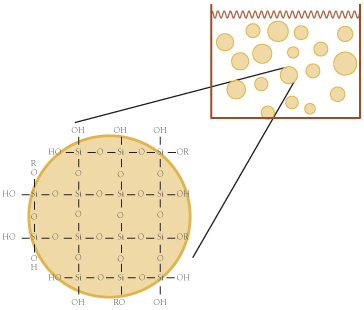Our Approach
The key to our technology is the process we have developed to utilize nanoscale properties by first functionalizing nanoparticles and then incorporating them into a base material (polymers, metals, ceramics or composites):
- Nanoparticles have a strong tendency to agglomerate (cluster) which negates the nanoscale properties.
- Our process keeps the nanoparticles separated as nanostructures, and not micron-sized agglomerates which are of limited use.
The result is schematically illustrated below, using oil and water repellent molecules as an example:

|
The functionalization process allows the nanoparticles to:
- Be designed with various capabilities, such as anti-adherence, scratch resistance, tribological enhancement (improved wear characteristics), corrosion resistance, etc.
- Bond with the underlying material using strong chemical forces.
- Not set when dispersed in an appropriate liquid. They remain separated from each other indefinitely, as depicted below.

|









